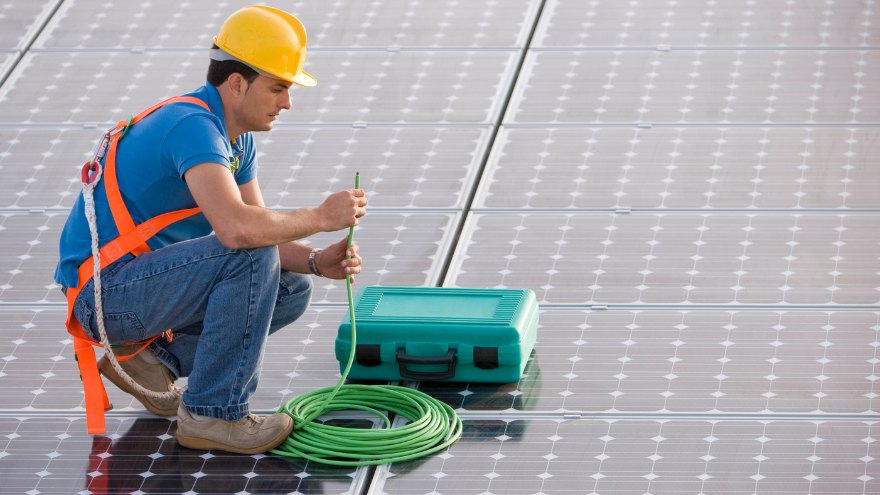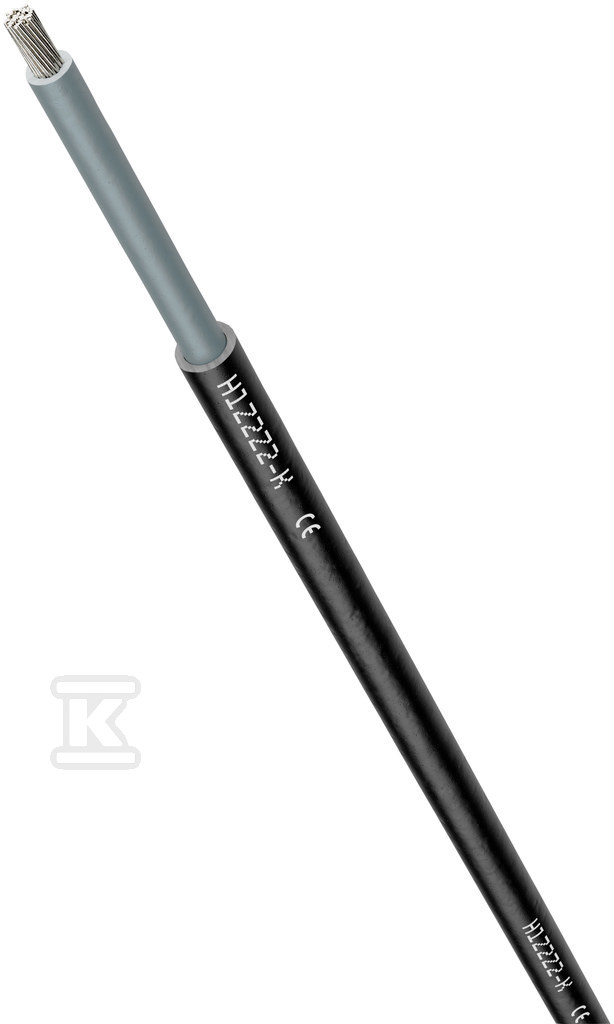Every photovoltaic installation must have properly matched cables and connectors. What to remember when choosing these products?

Check out the photovoltaic cables at the Onninen wholesaler
Selecting a cable for a PV installation that is resistant to difficult environmental conditions
The choice of cables for a PV installation is of great importance, especially in the context of difficult environmental conditions. A photovoltaic cable must therefore meet various challenges, such as UV radiation, extreme temperatures, humidity, but also mechanical damage. Photovoltaic cables should comply with the EN 50618 standard. It defines the requirements for cables used in photovoltaic systems.
 The issue of insulation is very important here, so when choosing photovoltaic cables, let's focus on products with silicone rubber or cross-linked polyethylene (XLPE) insulation. These materials are resistant to low and high temperatures, meeting the most stringent requirements of thermal resistance tests.
The issue of insulation is very important here, so when choosing photovoltaic cables, let's focus on products with silicone rubber or cross-linked polyethylene (XLPE) insulation. These materials are resistant to low and high temperatures, meeting the most stringent requirements of thermal resistance tests.
The same can be said about resistance to moisture and chemicals, which is why a special protective cover should be installed in the cables. It protects the photovoltaic cables from corrosion and water ingress. In the case of installations near the sea or industrial plants, this factor is particularly important. It ensures the safety of connections.
At the same time, one cannot forget about the mechanical resistance of the cables to impact, bending or abrasion. Taking this into account, it is worth choosing cables with a polyurethane coating or additional reinforcement with aramid fibers.
What standards must cables and wires for solar installations meet?
As we can see, photovoltaic cables must be designed with many key factors in mind. They must also meet the appropriate standards. We have already mentioned one of them - EN 50618 - in the previous paragraph, but there are many others that every owner of photovoltaic panels should know about.
This is particularly true of the IEC 62930 standard, which defines requirements for single-conductor cables used in photovoltaic installations. The standard covers, among other things, resistance to stretching, bending and the effects of chemicals.
Another one, the IEC 60216 standard, specifies the thermal durability of insulating materials used in solar cables. This allows them to withstand very high temperatures caused by exposure to the sun, but also due to low temperatures at night or in winter.
Other standards, such as IEC 60364-7-7-712 and IEC 61730, deal with photovoltaic systems and the safety of panel modules. They indicate important requirements for cables regarding fire resistance, thus minimizing fire and ignition risk. They are also important in terms of the risk of electric shock.
How to choose solar cable connectors for energy storage?
 To select solar cable connectors for energy storage, we must consider the most important parameters. They must be compatible with the type and cross-section of the cables used in the system. Therefore, before we decide on specific connectors, we should familiarize ourselves with the manufacturer's specifications. This way we can be sure that they are compatible in every respect - electrical and mechanical.
To select solar cable connectors for energy storage, we must consider the most important parameters. They must be compatible with the type and cross-section of the cables used in the system. Therefore, before we decide on specific connectors, we should familiarize ourselves with the manufacturer's specifications. This way we can be sure that they are compatible in every respect - electrical and mechanical.
Thanks to this, the connectors provide low contact resistance as well as good conductivity. This minimizes energy losses and guarantees a stable connection. Photovoltaic installations can therefore operate undisturbed. At the same time, the connectors must be resistant to environmental conditions such as UV radiation, moisture, corrosion and extreme temperatures.
Connections and all wiring must be as safe as possible, which is why connectors must have appropriate certificates, such as TUV or UL. They confirm that these products meet strict safety standards. It is also important that connectors are equipped with mechanisms to prevent accidental disconnection, as well as insulation protecting against electric shock. It is also important that connectors are easy to assemble and disassemble, which is especially important during installation and maintenance of the system.
Photovoltaic cables and connectors at the Onninen wholesaler
As we can see, cables and connectors are of great importance in every photovoltaic installation, which is why they must be selected appropriately, taking into account their properties and size, for example 6mm solar cable . In the Onninen wholesaler you will find what your photovoltaic installation needs. The highest quality solar cables and wires are available here. Here are our suggestions!
- We especially recommend the Bitner 1000 Solar 1x4,0 0.6/1 kV solar cable - flexible single-core cable for photovoltaic installations, 0.6/1 kV, with dimensions: 1 m (length), 0.0047 m (width), 0.0047 m (height), 0.058 kg (weight).
- The H1Z2Z2-K 1x4 red solar cable , certified according to EN 50619, also works perfectly. It is worth knowing that in this case, for the vast majority of home installations, a cross-section of 4 mm2 is sufficient. For installations of around 10-15 kW and greater distances, we use a higher cross-section, e.g. 6 mm2.
- We also recommend solar cable H1Z2Z2-K 1x6 in black . Type H1Z2Z2-K,AC U0/U:1.0/1.0 kV DC U0/U:1.5/1.5 kV, with good resistance to notches and abrasion. UV-resistant, according to N 50618, ozone resistance according to EN 50396, halogen-free IEC 60754-1, IEC 60754-1, IEC 60754-2, IEC 60364-5-52, HD 60364-5-54.
For photovoltaics and energy storage to work flawlessly, they must be well designed in every respect, including the cabling. This is why cables and connectors are so important, and their selection is crucial for the entire photovoltaic system.